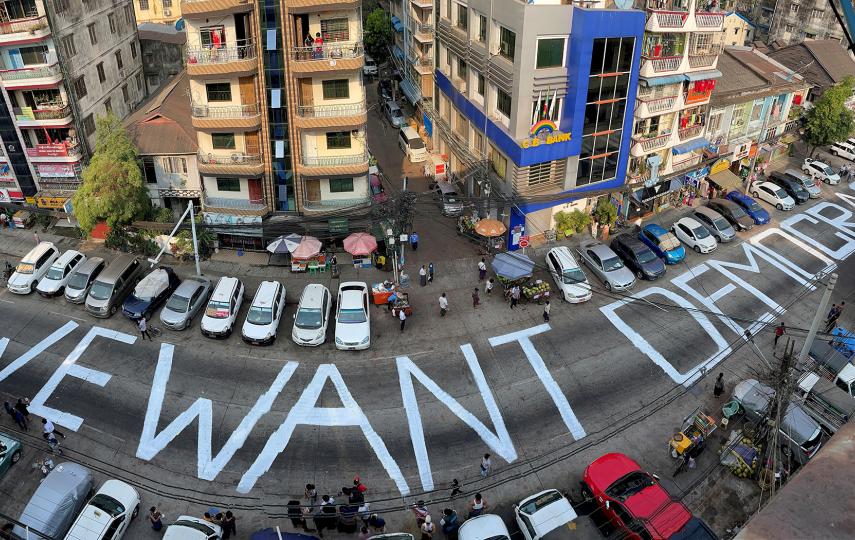Global attention is fixated on the Russian invasion of Ukraine. But another humanitarian catastrophe is unfolding, out of the spotlight, in my home country of Myanmar.
The Myanmar military, known as the Tatmadaw, is unleashing terror on the civilian population with ever-growing levels of brutality, since staging a coup in February 2021. Some 1,700 people – and likely many more – have died, half a million people have been displaced, and hunger levels are growing.
The military is blocking humanitarian aid to curb anti-coup resistance movements and to force the population into submission. Access to medical care and food are systematically and intentionally denied as part of the military’s counterinsurgency policy. Many of the newly displaced are forced to live in deplorable and precarious conditions – hiding in jungles and forests, afraid to return to their villages or farm their lands. Under these circumstances, it is both a humanitarian and human rights catastrophe.
The scale of displacement is staggering. Consider that in my homeland of Chin State in northwest Myanmar, nearly one fifth of the population have fled their homes. The Chin Human Rights Organization (CHRO), which I work for, estimates that more than 50,000 people are currently internally displaced across the nine townships of Chin State, while at least 40,000 may have crossed the border to become refugees in India’s Mizoram State.
The void in humanitarian assistance here has been ignored for far too long.
Yet for most of the last year, civilians have struggled to receive food, shelter, medicine, or healthcare – due to military aid blockades on the Myanmar side, and due to a lack of formal aid programmes and resources in India.
In India, refugees survive in makeshift shelters, dispersed in pockets across Mizoram. It has been a year since refugees started arriving, but neither the Indian government nor international aid agencies have provided aid. Instead, it’s local churches and civil society groups that have stepped up with handouts and small-scale assistance.
Donor governments and international agencies should immediately offer their help to India, and to the local groups trying to reach trapped communities in Myanmar, so that aid can be more organised, substantial, and sustainable. The void in humanitarian assistance here has been ignored for far too long.
Aid blockades and burnt villages
Armed resistance to the military coup is widespread and growing in Myanmar, and so is the violent pushback.
The Tatmadaw has deliberately targeted civilian populations, subjecting them to mass atrocities and gross human rights abuses.
The offences are well documented, including recently by the UN’s rights chief: Arbitrary arrests and detention, torture, massacres of civilians, rape and sexual violence against women, destruction of property. The Tatmadaw has even launched indiscriminate airstrikes on villages in the name of quelling the resistance movements opposed to its rule.
In Chin, the junta has killed more than 200 civilians and arrested and detained more than 900 people, according to documentation by CHRO, which is monitoring the dire situation across the northwest.
Thantlang, my hometown, is empty. The Tatmadaw burned and destroyed at least 1,000 homes there last year.
In the only Christian-majority state in a predominantly Buddhist country, the military has destroyed 50 churches and religious buildings, killed six Christian leaders, and disappeared four pastors.
Cross-border assistance is proving to be a lifeline for some. With access largely blocked in Chin, the only way to reach trapped communities is through aid transported from India.
Humanitarian agencies and institutional donors must find ways to directly provide funds and resources to local groups doing this important work. The assistance that’s available on either side of the border is ad hoc, woefully inadequate, and unsustainable.
Today, much of the world’s focus is on Ukraine. This is understandable.
But as Ukraine’s crisis worsens, it feels like the resources and attention span available for Myanmar continue to shrink.
Myanmar’s civilians also deserve humanitarian aid. Basic assistance must be scaled up – on either side of the international borders – before the humanitarian fallout worsens.








